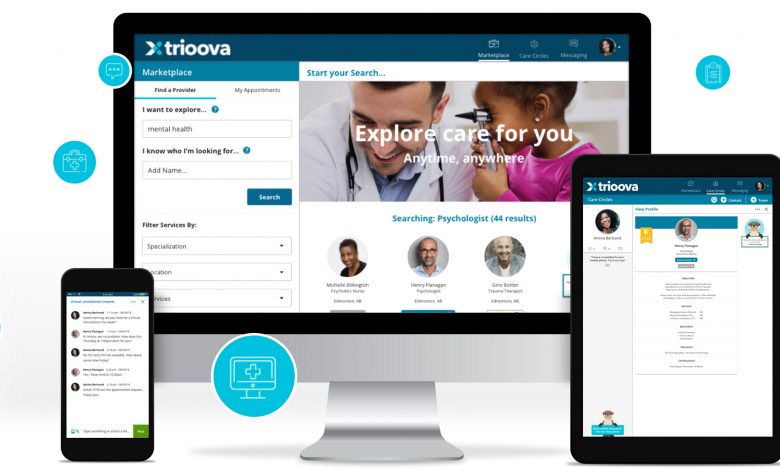
By Raye Willms, VP Health Markets
https://www.youtube.com/watch?v=33b4v1QFUF0&feature=youtu.be
The Problem
Canada’s healthcare system is overwhelmed today with limited resources. As a result, limitations to the level of care exist. The system is responsive, focused on fixing problems in an acute manner. This results in a massive gap in care, leaving preventive, long term and chronic care out of scope. Healthcare relies heavily on family and friends to pick up where the system drops off. Long-term and continuous care, that are increasing needed in our aging population, are left to the patient and their family/friend caregivers to coordinate. Many hours are spent trying to navigate the complexities of care, researching options, coordinating medical appointments and organizing medical information. The 8.1 Million caregivers in Canada right now contribute over $25 Billion to the healthcare system in unpaid labour. The statistics speak to the needs of caregivers.
In today’s healthcare system, the caregiver is overburdened and underserved. The majority are in between the ages of 45 and 65 years old. This generation is termed the ‘sandwich generation’ because they are sandwiched between their aging parents and growing children. They are also in their peak earning years so are likely balancing a full time career as well. Stretched between these responsibilities, caregivers often experience their own health issues that also have to be balanced.
Not only are caregivers balancing multiple responsibilities, the current medical system is challenging, inefficient and cumbersome to navigate. Medical information is scattered throughout the healthcare system; stored in siloed EMRs (Electronic Medical Records) that don’t communicate with one another. Inaccessible information and fragmented knowledge about care needs results in caregivers and their loved ones feeling locked out of the health system. They are on their own to navigate care and gain understanding of care plans, medications and treatments. Services seem inaccessible, options limited and communications disjointed. As a result, the caregiver lacks the necessary tools, and empowerment to be an advocate for the health of their family; Trioova™ changes that dynamic.
The Solution
Trioova recognized these issues early on and set its mission to empower caregivers, patients and families with connected healthcare with a global vision to be the leading provider of innovative healthcare technology that facilitates instant, interconnected and individualized health. As a health marketplace and care navigation service, Trioova is designed for patients, caregivers and families. Trioova leverages the existing healthcare system to create an accessible and trusted healthcare marketplace for those that need it. Simple as that. Care coordination tools, connecting healthcare teams and enabling communication are by-products of an accessible marketplace.
The Impact
We will focus on the impact for senior care although opportunities extend well beyond senior and community care. Senior care is a majorly underserved area in the current healthcare system. Seniors are expected to travel to clinics and pick up their medications from pharmacies while cities are not built for easy mobility. Transportation systems are limited and expensive, especially in Winter seasons with the risk of falling massively increased. Digital health solutions like Trioova empower seniors and their caregivers to access services that reduce the need for travel. Remote care, home care and virtual care are  growing industries, marketplaces like Trioova will increase the demand for these services. Seniors can safely access the care they need, when and where they need it.
growing industries, marketplaces like Trioova will increase the demand for these services. Seniors can safely access the care they need, when and where they need it.
The quality of care can be improved with digital tools like Trioova. Entire care teams (for example, multiple siblings caring for their aging mother) can be connected and instantly informed. This can reduce miscommunication and time spent transferring information from one person to another. No more binders! Not only is the care team connected, providers can all be connected around a patient’s care. Everyone can be on the same page, allowing for smooth and continuous care. Being informed empowers the main care manager to advocate for the health of the patient in any instance. Accessibility also empowers choice, it opens the door for individuals to explore their options in a trusted marketplace.
An interconnected healthcare system results in simplicity, ease of access and reduced miscommunications. Everyone will benefit from these changes, especially those that are stuck in a fragmented care cycle. Be confident in your care.




